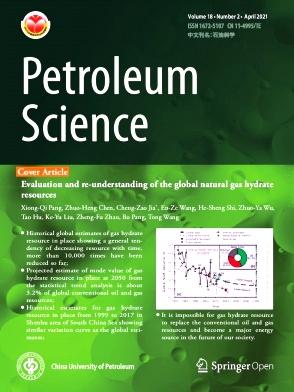Evaluation of the combined influence of geological layer property and in-situ stresses on fracture height growth for layered formations
IF 6.1
1区 工程技术
Q2 ENERGY & FUELS
引用次数: 0
Abstract
Fracture geometry is important when stimulating low-permeability reservoirs for natural gas or oil production. The geological layer (GL) properties and contrasts in in-situ stress are the two most important parameters for determination of the vertical fracture growth extent and containment in layered rocks. However, the method for assessing the cumulative impact on growth in height remains ambiguous. In this research, a 3D model based on the cohesive zone method is used to simulate the evolution of hydraulic fracture (HF) height in layered reservoirs. The model incorporates fluid flow and elastic deformation, considering the friction between the contacting fracture surfaces and the interaction between fracture components. First, an analytical solution that was readily available was used to validate the model. Afterwards, a quantitative analysis was performed on the combined impacts of the layer interface strength, coefficient of interlayer stress difference, and coefficient of vertical stress difference. The results indicate that the observed fracture height geometries can be categorized into three distinct regions within the parametric space: blunted fracture, crossed fracture, and T-shaped fracture. Furthermore, the results explained the formation mechanism of the low fracture height in the deep shale reservoir of the Sichuan Basin, China, as well as the distinction between fracture network patterns in mid-depth and deep shale reservoirs.
评估地质层特性和原位应力对层状地层断裂高度增长的综合影响
在对低渗透储层进行天然气或石油开采时,裂缝的几何形状非常重要。地质层(GL)特性和原位应力对比是确定层状岩石中垂直裂缝生长范围和封闭性的两个最重要参数。然而,评估对高度增长的累积影响的方法仍不明确。本研究采用基于粘聚区方法的三维模型来模拟层状储层中水力裂缝(HF)高度的演变。该模型结合了流体流动和弹性变形,考虑了接触裂缝表面之间的摩擦以及裂缝成分之间的相互作用。首先,使用现成的分析解决方案对模型进行验证。然后,对层界面强度、层间应力差系数和垂直应力差系数的综合影响进行了定量分析。结果表明,在参数空间内,观察到的断裂高度几何形状可分为三个不同的区域:钝形断裂、交叉断裂和 T 形断裂。此外,研究结果还解释了中国四川盆地深部页岩储层低断裂高度的形成机制,以及中深部页岩储层和深部页岩储层断裂网络模式的区别。
本文章由计算机程序翻译,如有差异,请以英文原文为准。
求助全文
约1分钟内获得全文
求助全文
来源期刊

Petroleum Science
地学-地球化学与地球物理
CiteScore
7.70
自引率
16.10%
发文量
311
审稿时长
63 days
期刊介绍:
Petroleum Science is the only English journal in China on petroleum science and technology that is intended for professionals engaged in petroleum science research and technical applications all over the world, as well as the managerial personnel of oil companies. It covers petroleum geology, petroleum geophysics, petroleum engineering, petrochemistry & chemical engineering, petroleum mechanics, and economic management. It aims to introduce the latest results in oil industry research in China, promote cooperation in petroleum science research between China and the rest of the world, and build a bridge for scientific communication between China and the world.
 求助内容:
求助内容: 应助结果提醒方式:
应助结果提醒方式:


